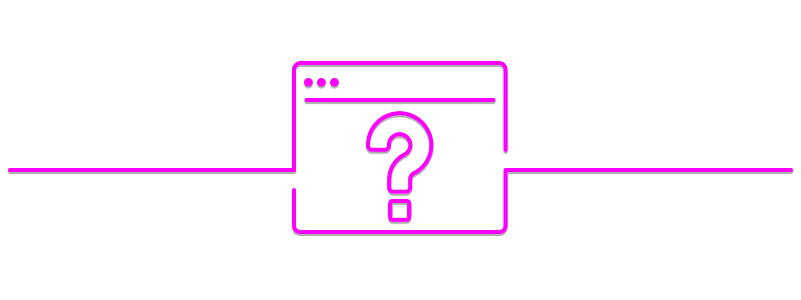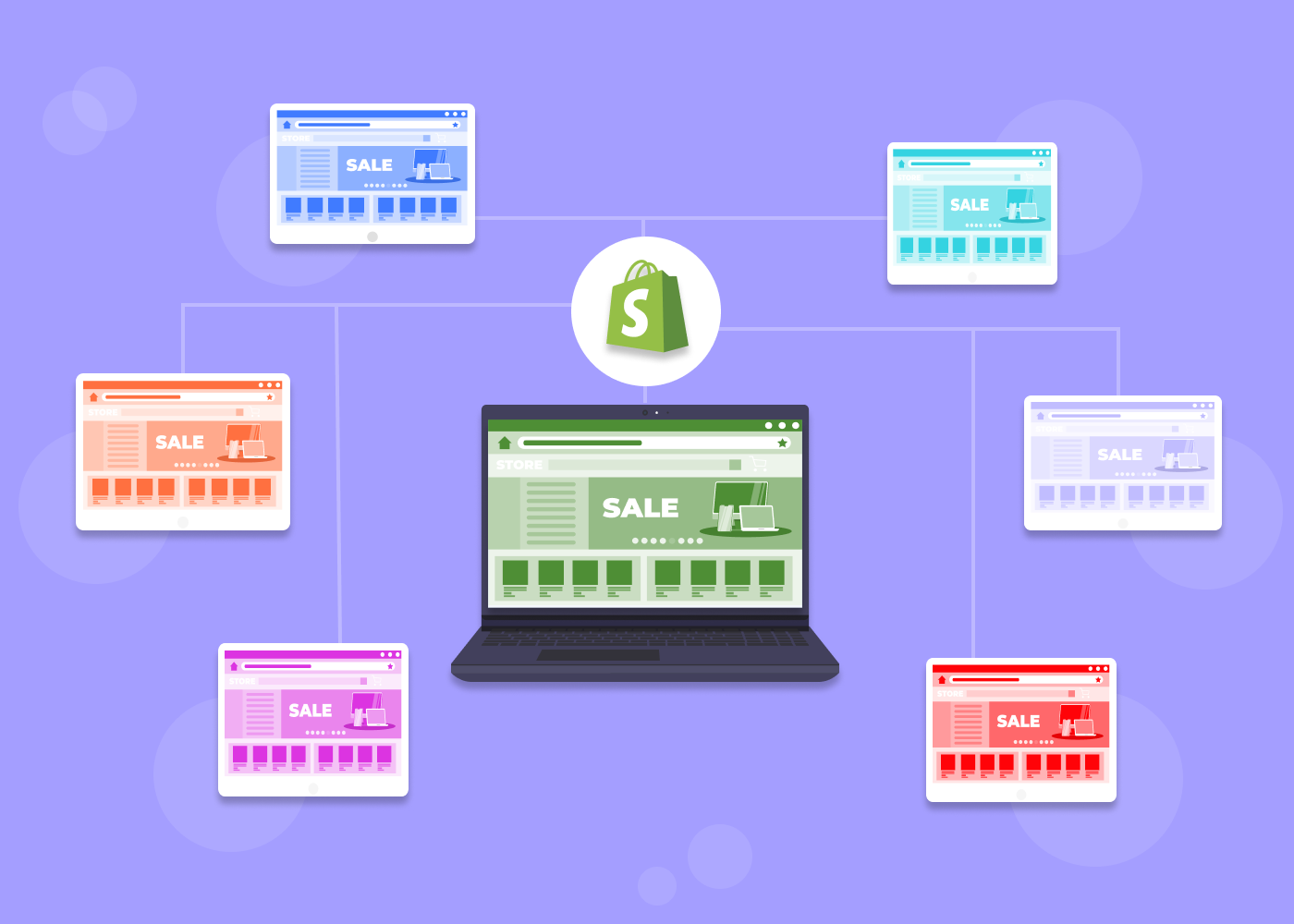Content
How to Build an Ecommerce Website and How Much Does it Cost?

These days we can’t imagine our life without digital purchases and the pandemic just increased this shift to online activities. Technology is going to become all the more important to stay tuned during the lockdown, and online commerce has a strong advantage in the post-pandemic future.
Lets talk about itHave a project in mind?
Yet, how to build an eCommerce Website? How much does it cost? How can a budding entrepreneur get started?
Let’s get to it.

Obviously, that transition to online commerce will further grow in the upcoming years. Statista predicts almost 5 billion digital buyers in 2022, a figure likely to reach 6.5 billion by 2023.
The main long-lasting impact of the pandemic will be the Ecommerce boom.
Shopping on the web is becoming more common practice so that fewer people go shopping in malls or choose offline education. The number of people who prefer to buy goods and services in the digital stores will reach over 6.5 billion people by 2023.

How to create an Ecommerce website?
Basically, the process of Ecommerce website development is similar to building other websites. Still, there could be typical failures that cause budget loss and a waste of time.
How to get an eCommerce website up and running on the first shot without costly mistakes?
How to lay a solid foundation for the future of your business?
Follow this step-by-step guide to create your commercial site with more certainty, less risk, and higher success predictability.
-
Choose your Domain Name - In fact, domain is an address of your site on the web. Typically, customers remember an online shop on its domain so that a good name is a key to success for your business. Keep it simple and easy to remember but still consistent with your company’s name.
-
The eCommerce platform to use - There’s plenty of platforms for online commerce. Still, not all of them are capable of handling the increased traffic and scaling a business. Magento or Shopware will be the best option for most online retailers. Can’t get your head around the best platform for your commerce project? The Dinarys team is here to help!
-
Customer base – Consider the expected traffic and number of customers who’ll determine the platform. A small online shop with limited traffic will be cheaper than one with many visitors. With more traffic comes the need for more robust hosting, as well as more frequent maintenance, and often the need for more advanced features. All of this requires more hours and skill from the web developers, although this can be easily mitigated by contracting an offshore development team.
-
Web Hosting - pick up the best hosting for your website. Most SaaS platforms offer some level of hosting, although it can be limited in the amount of storage, traffic, and even the number of orders, customers, and products. Still, SaaS hosting can be a good pick for startups or small businesses. As the company grows, most owners move onto dedicated hosting.
-
SSL certification - is the standard security technology for data and transaction protection for online commerce. Without SSL a web store will be vulnerable to hackers and even can’t get a high Google ranking. On top of that, most users avoid Ecommerce websites without the padlock icon in the browser address bar, worrying about their personal and credit card data. By now, there are different SSL certificates to choose from. If you prioritize a high Google position and your clients’ data security, then buy one that will be the best option for your business.
-
Supporting applications – To develop an eCommerce website you need the Enterprise Resource Planning solution. ERP refers to the eCommerce platform software that manages inventory, shipping, invoicing, and other backend functions. Large eCommerce enterprises may use several ERP packages.
-
Ecommerce User Experience (UX) Design - Driving traffic to a website and not getting conversions is one the most common struggles in the digital era. Ecommerce UX design is a roadmap for your clients to make a quick and comfortable purchase in one go. Yet a good UX design will increase the final cost for the Ecommerce website.
The Dinarys team has extensive experience in online shop UX design. If you'd like to see some examples of our work, read our previous article 5 Tips for Magnificent eCommerce Website Design. There are tons of tips and inspiration here.
-
Choose Ecommerce website features and functionality - If your business model requires any custom features, then you need to provide them for your website. To give you an idea of some of those custom features, check out our previous article, The Top 9 Best E-Commerce Features. Let your website be empowered by tons of additional capabilities to impress your clients. Large companies can afford the budget for the coolest, most interactive features to promote their products and stand out from competitors.
At Dinarys, we often build features like outfit previews and meal constructors, as well as customer loyalty programs. A smaller company can take advantage of these features through off-the-shelf plug-ins.
-
Marketing – Of course, all this software is useless without customers to use it. Unfortunately, many companies don’t delve into the development of a reliable marketing strategy. There are many ways to attract traffic to a website, including social media, video marketing, mobile marketing, and even traditional methods such as mass mailing.
-
Graphic Design - compelling visual is key to grab the attention of users in the current digital environment. A trendy web design that reflects the unique style of your brand is a long-term investment in your online business. You might also like: 7 Key Advantages of CRM for E-Commerce. A striking, memorable logo falls into the same category. If your business does not already have a recognizable logo, we recommend hiring an offshore design team. Typically, they will deliver results in one week to one month.
-
Create content – As marketing mavens say, content is king. For an online store, content should include product images, descriptions, and prices. It may also entice customers with buying guides, blogs, contests, and more. Your distributor may already have professional product images available. If not, an offshore designer is often the best option to optimize product images.
A store with 1,000 products could require many hours to fill in product images and descriptions. You may also in: How to Build a Successful Retail Website for Your Business

Ecommerce Website Templates
Such platforms as Shopware and Magento include eCommerce website templates that are usually customized to some degree. You are free to change colors, images, and content blocks. All you need to do is just to install the theme and load your own content. These tools help you cut the budget of website development and save a lot of time. Yet, the best thing is that you can see what you finally get as a result.
Still, ready-made designs are not so good than custom made ones in many ways. If your eCommerce project is a central aspect of UX, these cookie-cutter templates will hardly cater for the demands of modern users. Commonly, these solutions are far more trivial and boring as opposed to custom designs from scratch. A unique well-designed website can not only increase conversion rates but also show your clients that you take them seriously. Still, if the price matters that's a good option.

Most basic eCommerce website templates cost up to $300 but installation and customization can cost up to $2,000. A very elaborate, customized site that really stands out from the crowd may cost up to $100,000.
How much does it cost to build an eCommerce website?

The exact price to develop a custom eCommerce website depends on various factors specific to a certain business, and it's impossible to give a general estimate of eCommerce website cost. What we can do in this section is consider the important factors that directly affect custom online shop development costs. So, which factors influence the eCommerce website design cost?

The price will include the following points:
-
Web hosting cost for small online stores typically varies between $20 and $250 per month. Hosting for larger online shops costs upwards of $300 per month. To add tight security, a top concern in today's age of cybercrime, hosting could cost up to $2,000 per month.
-
ERP packages may cost upwards of $100,000 per year in licensing fees. On top of this base cost, integrating all of this software can require hundreds of man-hours of programming and development. To save on these costs, startups may choose "off-the-shelf" ERP solutions that require little to no custom work, at the expense of customized functionality.
-
Good UX design for an ecommerce website typically costs up to $10,000-$15,000. Measuring the effectiveness of the UX design is a continuing process, well past development, and initial launch.
-
It’s hard to imagine a web store without a catalog and catchy images. By now, the visual elements of an eCommerce site typically cost from $500 to $2,000. Stock photography can be quite expensive, as can be custom photography and graphic design work.
-
Last but not least, don't forget the ongoing costs of running an eCommerce store. Whether you are a solopreneur or manager of a large team, you are sure to need training and support for your site. Expect to pay from $2,000 to $4,000 for the initial training, depending on the sophistication of your eCommerce platform and the number of employees to be trained.

Ecommerce Website Cost Calculation
Those are the most important financial costs in creating an online store. Still, a good cost analysis should also include the allocation of developers' time. Let’s look into the typical breakdown.
- Domain Name: $5 to $15 per year
- Website Hosting: $75 to $200 a year
- CMS: $0 to $50,000+ per year
- Ecommerce functionality: $5,000 to $50,000 (initial investment)
- Web design or theme: $250 to $20,000+ (initial investment)
- Copywriting: $50 to $500 per page or article
- SEO for higher Google ranking: $300 to $1,500 per month
- Multimedia design: $250 to $10,000+ (depending on level of interactivity required)
- DataBase integration: $5,000 to $25,000 per integration
- Ecommerce website maintenance: $500 to $1250 a year (depending on the number of updates required)
In most cases, an eCommerce website cost makes about $10,000 - $50,000 in total. As in most businesses, skimping on the initial investment will mean lower returns later on.
Compared to the costs of a brick-and-mortar store, eCommerce is a steal. After factoring in rent, inventory, interior design, marketing, personnel, and equipment, a B&M store often costs between $100,000 - $200,000 to open. But would you ever dream of opening that store by cutting corners everywhere, with disorganized shelves, a painfully slow checkout line, and the likelihood that the whole place might burn down at any moment?
Taking the time and resources to set up an online store right, from the start, is a far less costly and less risky proposition. Most successful stores will pay off their initial investment in the first year or less.
As always, the Dinarys team is available to help with more specific planning, providing information about online store development costs. To start, read our two-part article How to Build an Ecommerce Website, in which we describe this process and describe eCommerce website design costs.

How Startups Can Reduce the Cost of Development
If you are on a tight budget, don't worry. That's a very normal situation for any startup, and we have solutions. First, an offshore development team can greatly reduce the cost of development, without affecting quality. Outsourcing is one of the great tools of modern software development, and every company should take advantage.
There are also many low-cost choices in eCommerce platforms. Hosted solutions like Magento or Shopware can let a new company get started without a large outlay of funds.
A hosted solution means that the backend code for the online shop is owned and maintained by the platform provider. It's similar to renting a space for a brick-and-mortar store. You can use the space as you like, running your business from it, but major renovations and improvements are out of the question.
Hosted solutions are a great way for any online store to get started, and Dinarys can help you configure and customize whichever one you choose.

Pitfalls, Hidden Costs, and How to Spot Them
Most businesses today see the benefit in owning an eCommerce website. Development and coding is easy with the help of an outsource team, as long as you know your priorities between time, cost, and customization. If you need a website built from scratch, and you need it fast, the cost will be higher, and so on.
Here are a few additional questions to ask yourself before hiring an outsourced development team.
- Does your business have in-house resources that could deliver a quality online shop in less time and at less cost?
- Does your in-house team have the specific knowledge and expertise needed for modern eCommerce development?
- Who will take ownership of ongoing maintenance and support?
These questions will bring you to the cost to develop and maintain an eCommerce website, and help you decide whether to develop in-house or outsource.

How to Select an Outsourced Ecommerce Development Team
Of course, we're biased towards ourselves, Dinarys. No matter where you turn for your development needs, though, you should follow these steps first.
-
Create a list of features your online store needs. Order it according to importance.
-
Be prepared to describe your business, brand, and target market.
-
Make a list of your eCommerce business goals.
-
Look at your competitors. Create a document listing what they are doing right, what they are doing wrong, and what you can do better.
-
Set your budget. Be sure to include web development, web design, and post-launch maintenance and support.
-
Identify eCommerce agencies and outsourced teams as candidates for your business.
-
Before engaging with an agency or team, check their portfolio and references carefully.
-
Finally, contact your "finalists", providing them with the documentation you've created, and ask for an estimate.

Free Ecommerce Website Consultation
We hope you have found this article about custom eCommerce website development useful.
If you have additional questions, please don't hesitate to contact us at Dinarys and discuss an eCommerce website design cost.
Leave a message and your contact information, and we will be in touch quickly.
Let professionals meet your challenge
Our certified specialists will find the most optimal solution for your business.



